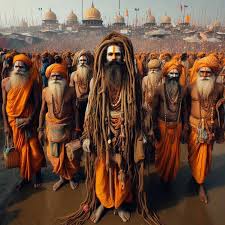Why Kumbh Mela extends to forty five days
By BK Singh
The Kumbh Mela, celebrated as one of the world’s largest and most spiritually significant religious gatherings, is a hallmark of Hindu culture. This event, attended by millions of devotees, occurs at four sacred locations in India—Haridwar, Allahabad (Prayagraj), Nashik, and Ujjain. The event rotates among these sites every three years, completing a full cycle over twelve years. Traditionally lasting 45 days, this duration holds profound spiritual, astrological, and practical significance.
Astrological Importance
The Kumbh Mela is intricately tied to Hindu astrology. The event aligns with specific celestial configurations, particularly when Jupiter (Guru) enters Aquarius (Kumbh) and the Sun and Moon align in Aries. This unique planetary arrangement is considered highly auspicious for spiritual purification and attaining moksha (liberation from the cycle of birth and death).
The 45-day duration is carefully aligned with these astrological movements. Jupiter’s transit through Aquarius, lasting around 12-14 months, creates a window of spiritually potent days. This period ensures that pilgrims have ample opportunities to partake in the sacred bathing rituals under the most favorable celestial influences.
Ritual Purity and Spiritual Cleansing
The significance of the 45 days also lies in its association with ritual purity. Hindu beliefs suggest that during this time, the waters of the sacred rivers, including the Ganges, Yamuna, and Godavari, become spiritually charged. Bathing in these rivers is thought to cleanse sins and grant spiritual merit.
The Mela includes specific auspicious bathing days, known as Shahi Snans, determined by planetary alignments. These dates attract millions of devotees seeking spiritual rejuvenation. The extended duration ensures that pilgrims from far and wide can participate, maximizing the transformative power of this sacred tradition.
Mythological and Historical Roots
The origins of the Kumbh Mela are deeply rooted in Hindu mythology. According to the legend of Samudra Manthan (Churning of the Ocean), the gods and demons churned the ocean to obtain Amrit (nectar of immortality). During the process, drops of nectar fell at four locations, now the sites of the Kumbh Mela. This mythological event imbues the Mela with divine significance, linking it to the eternal quest for spiritual and physical immortality.
Over centuries, this myth evolved into a structured festival spanning several weeks. The duration reflects the enduring connection to the nectar’s mythical properties, emphasizing the importance of patience and perseverance in the spiritual journey.
Cultural and Communal Enrichment
The 45-day period allows for more than just ritualistic bathing; it fosters a vibrant cultural and communal experience. The Mela features spiritual discourses, artistic performances, and interfaith interactions. It serves as a platform where sadhus (holy men), religious scholars, and spiritual leaders come together to share wisdom and practices.
By accommodating such a wide array of activities, the event strengthens community bonds and enriches the spiritual experience of the attendees. Pilgrims immerse themselves in the collective spirit of Hinduism, finding inspiration and connection within the vast gathering.
Practical and Logistical Considerations
Managing an event of this magnitude necessitates a well-planned timeframe. Extending the Mela to 45 days helps accommodate the millions of visitors, ensuring proper infrastructure, security, and amenities. The staggered participation allows for smoother crowd management and reduces pressure on facilities during peak bathing days.
Additionally, the longer duration provides flexibility for pilgrims to attend at a time convenient for them, ensuring a more fulfilling and manageable experience. This approach balances the spiritual needs of the devotees with the practicalities of organizing a gathering of such immense scale.
A Time for Reflection and Growth
Beyond rituals, the Kumbh Mela offers a profound opportunity for spiritual reflection and growth. Attendees engage in meditation, yoga, and devotional practices, fostering personal transformation. The extended period encourages a holistic pilgrimage experience, emphasizing the inner journey as much as the outward rituals.
In essence, the 45-day duration of the Kumbh Mela is a harmonious blend of astrological precision, spiritual tradition, cultural richness, and logistical pragmatism. This sacred gathering represents a timeless celebration of faith, offering devotees a unique chance to connect with their spirituality, cleanse their souls, and embrace the collective spirit of humanity.

